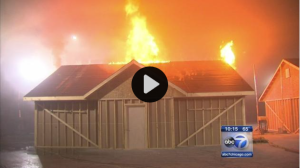By Renata Martinez with contributions from the staff of ThinkReliability
I better preface this blog with a few comments….
It’s not your average blog. As a facilitator, I deal with a lot of serious problems on a daily basis. Believe it or not I get these incidents stuck in my head and spend a lot of time thinking how I can better explain some lessons I’ve learned as a facilitator. The goal of this blog is to offer a little perspective into an incident where “miscommunication” is identified and I wanted to use something you could probably relate to. Have you ever been in an argument with a significant other? Maybe you didn’t see eye-to-eye on something (a Netflix option perhaps), or someone did something unexpected, or someone said something they didn’t mean (“Feel free to go golfing today; you don’t need to start on that to-do list”).
I also want to preface this blog by stating I am not a relationship counselor and I do not have a perfect relationship because of Cause Mapping. However, I will say that Cause Mapping has helped me gain an understanding of a whole new perspective – his.
Without further ado, let me set the stage. I have to take you back a bit. Let me take you back to my Sophomore year in college. *enters dream state*
Valentine’s Day: I hate it. I’ve always thought it was a commercialized endorsement to express love. The seemingly endless aisles in store after store of red and white hearts, chocolates, cards, teddy bears – gross. …and then I met my future husband. I was so head over heels for this guy, you would have thought I was 12 (but I was 20). So when Valentine’s Day came around our new love I was actually excited. The thought crept into my mind that I could be wow-ed this time; this could be it, I could learn to love Valentine’s Day. I had the opportunity to relive every Nicolas Sparks novel ever written. Expectations were set.
Leading up to the 14th, there was a conversation that took place that would ensure I will always despise the day…. I was asked what I wanted. My mind quickly played one romantic scene after another but that’s not what came out of my mouth. Instead I replied, “nothing.” Well, being the literal person he is, he took this and ran with it – he got me nothing. I was so disappointed because when I said “nothing”, OF COURSE I DIDN’T MEAN IT. “Nothing” was a clear translation for: you figure it out, you surprise me with some immaculate plan. I didn’t want to spell out what I wanted; I wanted to be the cool, low maintenance, laid back girlfriend. I don’t think he was too impressed with my “cool, laid back attitude” when I came to the realization that I didn’t get anything for Valentine’s day – the first time I actually wanted something.
So that’s one branch of the Cause Map: why did I not ask for anything on Valentine’s Day?

I know this is a basic example of understanding both perspectives but it comes up a lot on investigations. Understanding how people both give and interpret instructions/ directions is very important with regards to understanding solutions. For instance, I will never say that I want “nothing” for a holiday ever again. My new minimum “requirement” is a card. I really like cards. And since I’ve got your attention, I’ll give you a little hint about present-giving: the presents should always be wrapped…in gift wrap (the bag from the store does not count).
Looking at solutions for him: he no longer takes the answer “nothing” literally. Based on this experience, he now understands that I may not mean it. So, the solutions identified will help him, but if we were looking at a different employee (or boyfriend in this example) – how do we ensure it doesn’t happen to them? This is where we need to consider others who may learn from this (not just those directly affected in this incident). And this is why sharing lessons learned is so important.
By identifying both perspectives on the Cause Map, we can learn a lot about why an incident occurred (and what had to happen). This yields more effective solutions that will prevent reoccurrence. …after all: happy wife, happy life . . . right?!
To view both perspectives on a Cause Map, click on “Download PDF” above.











